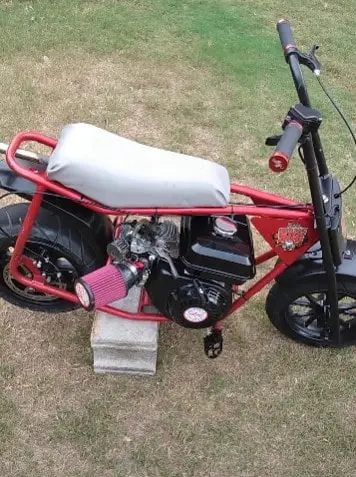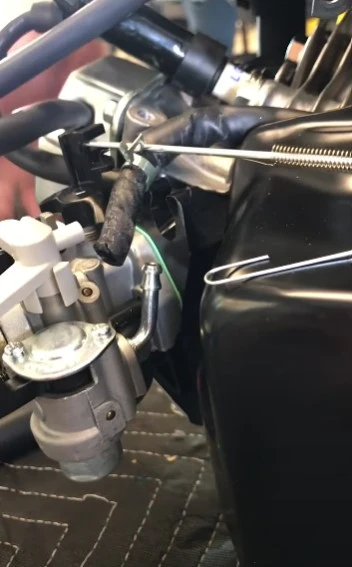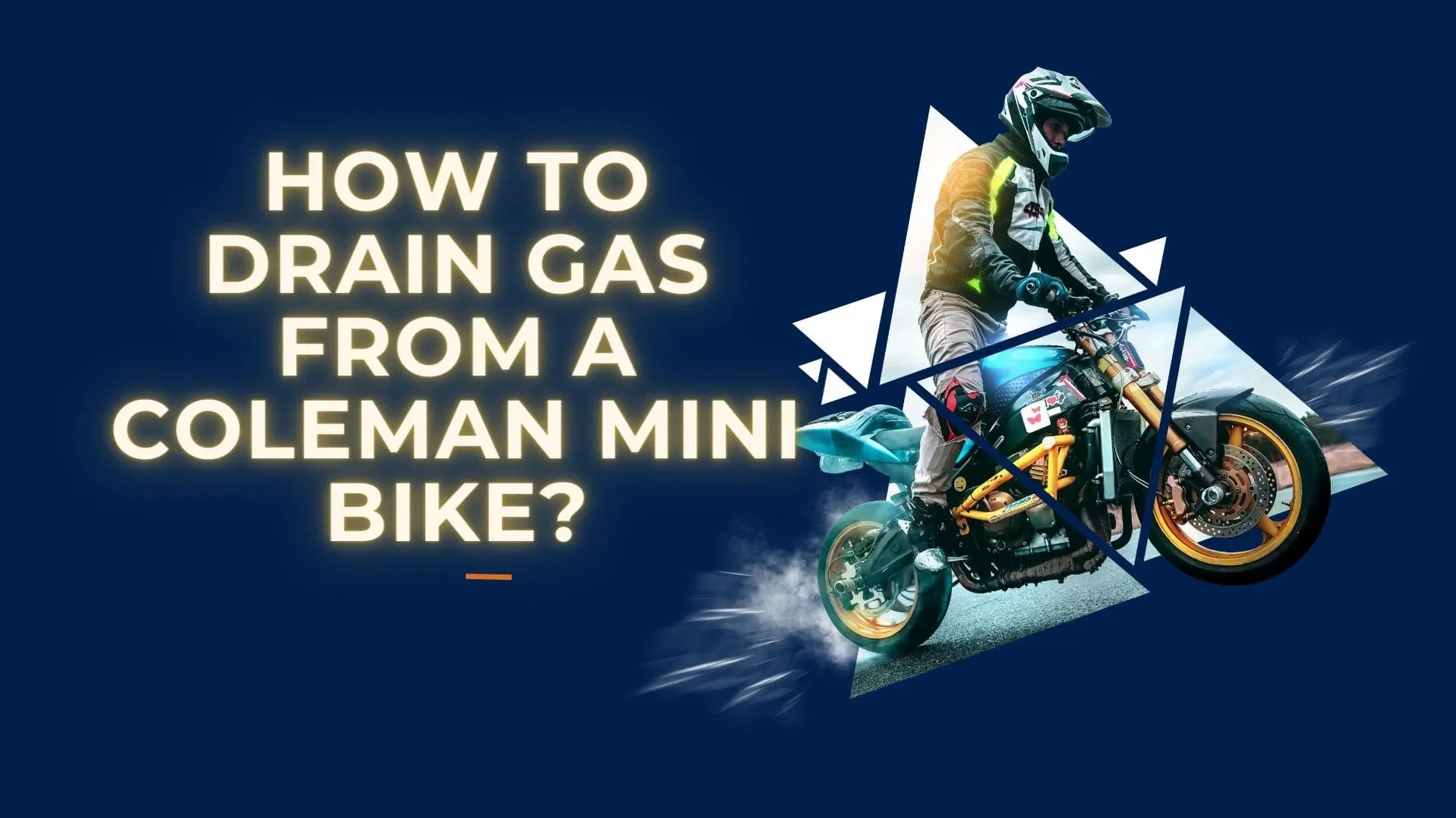How to Drain Gas From a Coleman Mini Bike?
To empty a Coleman gas tank, locate the petcock valve, place a drain pan underneath, slowly open the valve to drain the gasoline, then close the valve tightly once fully drained.
Draining old gas from your Coleman mini bike is important for keeping it running safely. Old gas can damage the engine. This article gives an overview of the steps to drain gas from a Coleman mini bike.
It is recommended to drain the gas tank every few months or after long storage. Draining removes old gas and sediment from the tank. This takes about 20-30 minutes.
When draining gas, work outside with good ventilation. Take precautions against fire and gas fumes. Wear gloves and goggles. The following sections show the complete process. This includes the tools needed, removing the tank, draining the gas, disposing of it properly, and reinstalling the tank.
Routine gas draining prevents issues like hard starting and poor performance. It keeps your Coleman mini bike in optimal condition.

Key Takeaways
- Drain gas tank every few months or after long storage periods
- Work outdoors with ventilation, gloves, goggles – gas fumes are hazardous
- Locate tank under seat or front panel, remove covers to access
- Use wrenches to detach tank, disconnect fuel line, lift tank off carefully
- Place drain pan under petcock valve, open slowly to drain gas completely
- Close valve when finished draining, never pour gas into drains/ground
- Take old gas to hazardous waste disposal events for safe disposal
- While tank is off, lubricate cables, inspect filter, spark plug, carburetor
- Reinstall tank securely, reconnect fuel line, tighten bolts, check for leaks
- Refill with fresh gas before operating, routine draining prevents issues
- Draining takes 20-30 minutes, ensures smooth performance and longevity
- Follow all steps carefully, proper gas tank maintenance is crucial
Materials Needed
Draining the gas tank requires a few basic tools and materials:
- Tools: You will need wrenches to loosen bolts and clamps on the tank, screwdrivers to remove any panels/covers, a drain pan to collect the old gas, a funnel to direct the flow into the drain pan, and clean rags to contain any spills or leaks.
- Safety gear: Be sure to wear protective gloves and goggles when handling gasoline. Also work in a well-ventilated outdoor area, away from any sources of flames or sparks.
Having the right equipment makes the process much simpler and safer. The specific tools depend on the design of your Coleman mini bike model. Inspect the bike and consult the owner’s manual to identify the best tools for accessing the tank.
Apart from the drain pan, funnel, wrenches, and screwdrivers, it can be helpful to have containers approved for gasoline storage to transfer the drained fuel for later disposal.
Make sure to gather all necessary tools and safety gear before starting the gas draining process. Be prepared to capture any drips or spills by having rags on hand. With the right materials, you can drain the old gas quickly and safely.
Locating the Gas Tank
On Coleman mini bikes, the gas tank is usually under the seat or front panel.
- First, remove any covers or panels blocking access to the tank. Use screwdrivers if needed to detach them.
- Consult the bike’s manual to find the exact location if unsure. Look under the seat first.
Removing covers allows you to reach the gas tank to drain it. Be sure to replace the covers after draining is complete.
Removing the Gas Tank
With access to the tank gained, the next step is removing it from the bike:
- Use wrenches to loosen any bolts or clamps securing the gas tank to the bike frame. Work slowly and carefully.
- Detach the fuel line that runs to the engine along with any other hoses or tubes connected to the tank.
- Once fully detached, carefully lift the tank up and off the bike. Be sure to lift straight up to avoid spilling any residual fuel inside the tank.
- Have your drain pan ready underneath to catch any gas that may drip out when removing the tank.
By loosening bolts and disconnecting fuel lines/hoses, you can fully remove the Coleman mini bike’s gas tank to proceed with draining out the old fuel. Just be cautious when lifting the tank off the bike, keeping it upright to prevent spills.

Draining the Gasoline
With the gas tank removed from the Coleman mini bike, you’re ready to drain out the old fuel:
- Place the drain pan directly under the petcock valve on the bottom of the tank. This valve is used to drain fuel.
- Slowly open the petcock valve so the gasoline can begin flowing out into the drain pan.
- Allow all of the gas to completely drain until the tank is fully empty. This may take a few minutes.
- Optionally use a funnel placed into the drain pan to help guide the gasoline flow without spills.
- Once fully drained, close the petcock valve tightly to prevent any liquid from leaking out.
The drain pan will collect all of the old, untreated fuel from the bottom of the tank. Be sure to dispose of the gasoline properly after draining. Never pour it down sinks or drains or onto the ground.
Disposing of Old Gasoline
Once the Coleman mini bike’s gas tank is fully drained, you’ll need to properly dispose of the old fuel collected in the drain pan:
- Never pour gasoline down household or outdoor drains. It can seriously contaminate groundwater and sewer systems.
- Also refrain from dumping gasoline directly onto the ground or into creeks, sewers, or canals. This severely damages the environment.
- Instead, look up hazardous waste disposal events in your city or town and take the old gas to be disposed of safely at these events.
- Use the same safety precautions when handling the old drained gasoline as you would with fresh gasoline. Wear gloves and minimize fumes.
- Store the drain pan of old fuel securely outside the home, inaccessible to children or pets until disposal day.
Proper disposal is crucial, even for old gas. Check local municipal websites for waste management calendars and requirements. Drained fuel can often be brought to service stations as well.
Additional Maintenance
With the gas tank removed from your Coleman mini bike, it’s a great opportunity to take care of other maintenance:
- Lubricate the brake and throttle cables using cable lubricant to prevent sticking and wear.
- Oil any exposed chains to keep them moving smoothly.
- Remove and inspect the air filter, replacing it if excessively dirty.
- Check the spark plug for fouling or damage, changing it if needed.
- Inspect the carburetor and fuel lines for any cracks or leaks and replace them if an issue is found.
- Clean out any debris with compressed air and remove sediment from the empty fuel tank.
Taking advantage of the access allows you to proactively maintain other key components. This prevents bigger issues down the road and keeps your mini bike in top shape.
Consult your owner’s manual for lubricant types, torque specs, and filter part numbers specific to the model.
Reinstalling the Gas Tank
After draining the old fuel and performing maintenance, it’s time to reinstall the gas tank:
- Reconnect the fuel line and any detached hoses to the petcock valve and tank securely. Tighten all connections.
- Confirm that any gaskets or seals around the tank openings are still in place before bolting back on. Replace if damaged.
- Using your wrench, tighten down the bolts that secure the tank to the bike frame. Do not overtighten.
- Once reinstalled, gently shake the tank and bike to verify the tank is stable and firmly attached.
- Reattach any covers or panels removed earlier to access the tank using your screwdriver.
- Do not ride the mini bike until you have refilled the tank with fresh gasoline.
Carefully resecuring the gas tank prevents leaks, spills, and hazards. Check your owner’s manual for proper bolt torque specs.
FAQs
Q1. What type of gasoline should be used to refill a Coleman mini bike?
Answer: Coleman mini bikes require standard unleaded gasoline, usually 87 octane. Do not use diesel or mixed fuels.
Q2. What is the fuel capacity of a gas tank on a Coleman mini bike?
Answer: Most Coleman mini bike gas tanks hold approximately 1 to 1.5 gallons of gasoline. Fuel capacity varies slightly by model.
Conclusion
Draining old gasoline from your Coleman mini bike gas tank is vital for keeping the engine running smoothly. Following the proper steps carefully prevents major issues down the road.
Always work outdoors with good ventilation when draining gas. Take precautions against fire and fume hazards by wearing gloves and goggles. Locate the tank under the seat or front panel by removing covers. Detach the tank then drain the fuel into an approved container through the petcock valve.
Safely dispose of the old gas at a hazardous waste event – never pour it into sewers or onto the ground. With the tank removed, perform additional maintenance like lubricating cables and replacing the air filter. Then, reinstall the tank securely and refill with fresh gasoline.
Routine gas draining takes just 20-30 minutes but makes a big difference in engine performance and longevity. Adhering to each step prevents sediment buildup, corrosion, and difficult starting issues. Your Coleman mini bike will run smoothly for years to come with proper maintenance.








